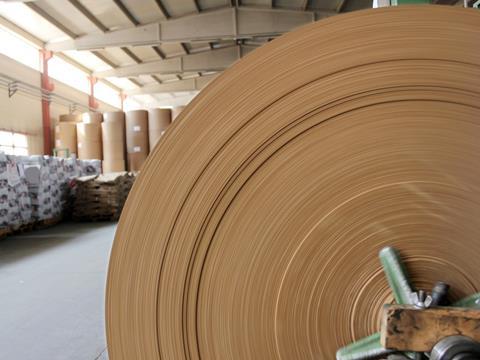
According to preliminary statistics for 2022 released by Cepi, the production of paper and board decreased by 5.9% in comparison to 2021, with contributing factors said to include high costs of energy and raw materials, resultant machine stops, and stalling economic growth.
Although the demand for paper is thought to have remained stable last year – for example, the statistics suggest that changes in consumption patterns in connection with the COVID-19 pandemic prompted a 3.6% rise in demand for sanitary and household grades – production is said to have slowed across global regions, including several of the EU’s main industrial competitors. A combination of these factors caused a decreased trade balance despite increasing global competition, says Cepi.
Furthermore, while it is thought to have remained steady over a three-year period, the utilisation of paper for recycling also saw a 6.4% decrease when compared to 2021. Cepi attributes this change to the high prices of gas and electricity, which have reportedly impacted the paper mills whose production relies on paper for recycling.
Progress in the sector is also said to have been stunted by slowing growth in global markets, particularly within the EU in the latter half of the year. Nevertheless, Cepi remains confident that Europe’s trade balance will remain positive in light of the continent’s previous strength regarding paper exports.
Additionally, the organisation identifies the replacement of fossil-based materials with paper and board as one of the sector’s main drivers for growth. The output of packaging paper apparently remains higher than pre-pandemic levels, although the calculation of such figures by tonne of paper produced is not thought to reflect the lightweighting efforts made by packaging manufacturers.
Going forward, it is hoped that the EU Green Deal Industrial Plan will contribute towards positive growth in long-term industrial trends.
Cepi is currently working alongside EHPA to implement heat pumps into existing paper mills, aiming to save 50% of the energy used in paper manufacturing and push for its decarbonisation.
In a previous statement, the organisation took issue with the ENVI Committee’s suggested proposals for the EU’s ‘Fit for 55’ legislation – warning that some of the changes would contradict efforts within the paper and pulp industry to prevent existing forests from being utilised as carbon sinks, amongst other concerns. It also called for appropriate legislation to be implemented in the European Union’s pursuit of its net zero carbon goals.
Oliver Giani and Vitali Morgovski, vice presidents and senior analysts at Moody’s, also spoke to Packaging Europe about the impact of Russia’s invasion of Ukraine on energy supplies, and what the paper packaging industry should expect as a result.












No comments yet